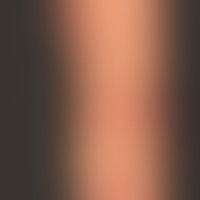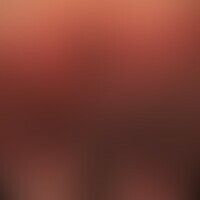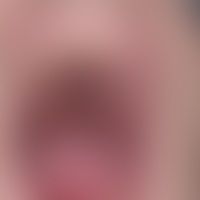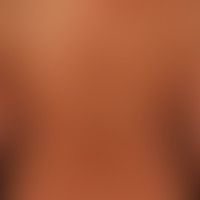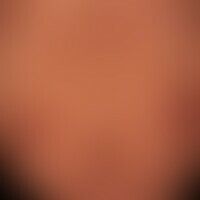Image diagnoses for "red"
900 results with 4542 images
Results forred

Superficial tinea capitis B35.0
Tineacapitis: extensive non-treated infection of the hairy and hairless scalp by Trichophyton mentagrophytes; known HIV infection.

Chondrodermatitis nodularis chronica helicis H61.0
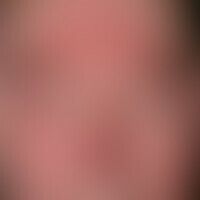
Rosacea papulopustulosa
rosacea papulopustulosa: centrofacially localized redness, inflammatory papules and pustules. infestation of the eyelids. recurrent keratoconjunctivitis.

Keloid (overview) L91.0
keloid. large, brown to brown-red, very rough, smooth nodes with a jagged edge structure. not painful to the touch, with significant pressure considerable pain. postoperative condition after excision of several acne nodes in the sternal region.
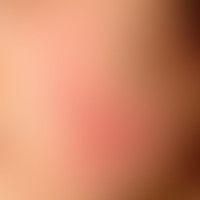
Lupus erythematosus tumidus L93.2
lupus erythematodes tumidus: for 4 weeks existing, little symptomatic, succulent, bright red, surface smooth papules and plaques. probably occurred after UV exposure (correlation could not be clearly clarified). no hyperesthesia. ANA: 1:160; DNA-Ak negative; DIF: uncharacteristic. initiation of therapy with Resochin.
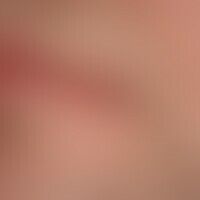
Lupus erythematodes chronicus discoides L93.0
Chronic cheilitis in lupus erythematosus chronicus discoides: chronically active, red, hyperesthetic plaques with adherent scaly deposits on the lip red of the upper and lower lip; focal areas affected are lip red and lip skin.

Nummular dermatitis L30.0
Nummular Dermatitis: General view: For several months persistent, strongly itching, solitary or confluent, coin-sized, infiltrated papules and plaques on the back of a 48-year-old patient.

Folliculitis profunda (overview) L01.0
Folliculitis profunda:painful, melting, bacterial follicular inflammation that has been present for about 1 week.

Granuloma anulare disseminatum L92.0

Sézary syndrome C84.1
Sézary syndrome: extensive, less characteristic, scaly and massively itching and painful erythroderma in an 81-year-old patient.

Sézary syndrome C84.1
Sézary-Syndrome. pat. as above. symmetric, flat, hyperkeratosis at the same time with development of erythroderma

Livedo racemosa (overview) M30.8
Livedo racemosa generalisata: extensive, bizarre, haemorrhagic reticulation of the skin

Melkersson-rosenthal syndrome G51.2
Melkersson-Rosenthal syndrome. Monosymptomatic course with cheilitis granulomatosa.

Lipodermatosclerosis L94.0
Hypodermitis: extensive reddening and induration of the lower leg. Painful if finger pressure is applied firmly. The tissue can be dented by prolonged finger pressure.
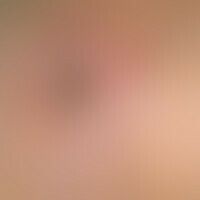
Basal cell carcinoma nodular C44.L
Basal cell carcinoma, nodular. centrally ulcerated, nonpainful ulcerated nodule in the region of the temple. ulcer not painful. characteristic for the diagnosis "basal cell carcinoma" is the raised, reflecting wall of the "ulcer" and the bizarre vessels.
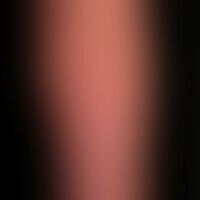
Acute generalized exanthematous pustulosis L27.0
Pustulosis, acute generalized exanthematous: acutely occurring erythrodermal exanthema with histologically proven subcorneal pustular formation in a 62-year-old patient. Exfoliative (coarse lamellar) scaling. massive swelling of the lower legs.
